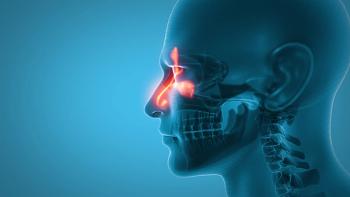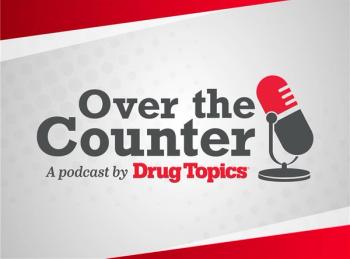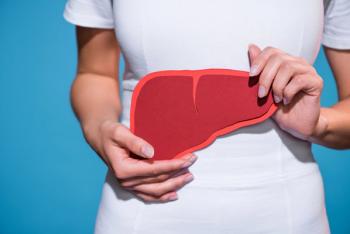
NCPA, USC Launch Pharmacy Desert Identification Tool
Key Takeaways
- The NCPA-USC mapping tool addresses pharmacy deserts by identifying areas with limited pharmacy access, especially in underserved and rural communities.
- Pharmacy deserts are defined by distance to pharmacies, with specific parameters for urban, suburban, rural, and low-income areas.
This collaboration is designed to bring resources addressing pharmacy shortages to the fingertips of the general public.
The National Community Pharmacists Association (NCPA) and the University of Southern California (USC) have partnered and launched the very first interactive pharmacy shortage mapping tool available to the public. Through the NCPA-USC partnership, the 2 organizations are teaming up to bring key stakeholders into the conversation and address ongoing access issues stemming from pharmacy deserts.
“Pharmacies are a critical access point for the prevention and treatment of acute and chronic illness, yet many are closing and not accessible to communities that need them,” Dima Mazen Qato, PharmD, MPH, PhD, professor at the USC Mann School of Pharmacy and developer of the mapping tool, said in a press release.1 “For decades, the World Health Organization has considered geographic access to pharmacies as a key determinant of access to essential medicines.”
The main idea behind the new mapping tool is to address the growing concerns surrounding pharmacy deserts in the US. Several definitions have been noted regarding what they are, but the most frequent understanding of a pharmacy desert is a census tract with a high poverty rate and no available pharmacy within 1 mile in urban areas and 10 miles in rural areas, according to a study published in JAMA Network Open.2
READ MORE:
With local community pharmacies filling over 90% of all prescriptions in the US, industry experts as well as general community members understand the true extent of pharmacies’ place in health care.3 Despite recent historical events significantly highlighting pharmacies’ crucial role in community health—namely the COVID-19 pandemic—pharmacies have been closing at an alarmingly fast rate, according to a study published in PLoS One.4
While some studies have reported up to 10 million US citizens across census tracts that live in pharmacy deserts,4 others have reported up to 57.1 million patients that live in a pharmacy desert, plus another 28.9 million living in a locale with just 1 pharmacy expected to serve an entire community and beyond.2
With further challenges in defining pharmacy deserts,3 the decreasing pharmacy benefit manager reimbursements have led to pharmacy closures.5 There is an overdue need to correct the trajectory of pharmacy deserts across US communities. With resources like the NCPA-USC mapping tool, experts are hoping these efforts can quell the negative outcomes from ongoing pharmacy deserts.
“Pharmacy shortage areas represent a persistent and worsening crisis in health care access,” Ronna Hauser, PharmD, senior vice president of policy and pharmacy affairs and co-director of the Pharmacy Access Initiative at NCPA, said in the news release.1 “This interactive mapping tool can now be used to combat that crisis—identifying critical pharmacies and allowing communities and policymakers to come together to ensure pharmacy access for individuals and families.”
Through USC’s development and NCPA’s funding support, the mapping tool is exciting for the independent pharmacy industry because it brings the proper stakeholders together to address all facets of the pharmacy shortage issue. Journalists can use the tool to craft stories on regularly updated pharmacy shortage metrics, while policymakers can access it for insights into policy measures that may increase pharmacy access. County health officials can also gain these insights, while community advocates and the general public have access to further bring attention to the issue.
At the moment of the NCPA’s release announcing the tool’s launch, 1 in 8 US neighborhoods were considered to be lacking in pharmacy services, with greater concerns in underserved and rural locations. This tool, like many other pharmacy desert definitions, has its own parameters for what a pharmacy shortage is: over 10 miles to a pharmacy in rural areas, 2 miles in suburban areas, 1 mile in urban areas, and over half a mile in areas with low income and low vehicle ownership.1
Now with the tool accessible to the public, there are a variety of functions within the mapping tool’s platform. First, users of the tool will be able to identify all pharmacy shortage areas designated between 2010 and 2024. They will also be able to identify pharmacies that are in “critical access,” meaning that pharmacy’s closure could create a new shortage or worsen an existing shortage.1 Other researchers have keyed these critical access pharmacies as “keystone pharmacies.”3
Furthermore, the mapping tool will also allow users to track new pharmacy closures or openings while being able to separate data by state, country, and congressional district. They’ll also have the ability to print specific maps that users explore.
Marrying technology with the brains of pharmacy industry leaders and the general public, this new mapping tool hopes to shed light on a deeply growing issue impacting millions of Americans’ health. Although stakeholders have been working to address the issue of pharmacy deserts and closures, there are now a significantly greater number of eyes on the challenge.
“We need leaders at every level to use this data to protect these lifeline pharmacies before more neighborhoods are in crisis,” concluded NCPA’s CEO Douglas Hoey, RPh, MBA.1 “When you lose your local pharmacy, you lose more than a place to fill prescriptions—you lose a trusted health adviser, a medication safety expert, and often the most accessible health care provider in the community.”
READ MORE:
Ready to impress your pharmacy colleagues with the latest drug information, industry trends, and patient care tips? Sign up today for our
REFERENCES
1. NCPA and USC launch first publicly available tool to identify pharmacy shortage areas across America. News Release. NCPA. November 4, 2025. Accessed November 14, 2025. https://ncpa.org/newsroom/news-releases/2025/11/04/ncpa-and-usc-launch-first-publicly-available-tool-identify
2. Mathis WS, Berenbrok LA, Kahn PA, et al. Vulnerability index approach to identify pharmacy deserts and keystone pharmacies. JAMA Netw Open. 2025;8(3):e250715. doi:10.1001/jamanetworkopen.2025.0715
3. Locklear M. A new metric to identify—and prevent—pharmacy deserts. Yale School of Medicine. April 11, 2025. Accessed November 14, 2025. https://medicine.yale.edu/news-article/a-new-metric-to-identify-prevent-pharmacy-deserts/
4. Catalano G, Woldesenbet S, Pawlik TM. Distribution of pharmacy deserts and its association with digital divide and residential redlining across the United States. PLoS One. 2025 Aug 11;20(8):e0330027. doi: 10.1371/journal.pone.0330027.
5. Berenbrok LA, Murphy EM, Herbert S. Why community pharmacies are closing—and what to do if your neighborhood location shutters. Ohio State University. February 21, 2025. Accessed November 14, 2025. https://pharmacy.osu.edu/news/why-community-pharmacies-are-closing-and-what-do-if-your-neighborhood-location-shutters
Newsletter
Pharmacy practice is always changing. Stay ahead of the curve with the Drug Topics newsletter and get the latest drug information, industry trends, and patient care tips.















































































































































